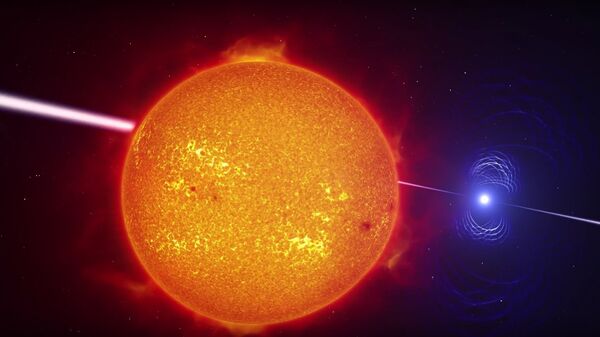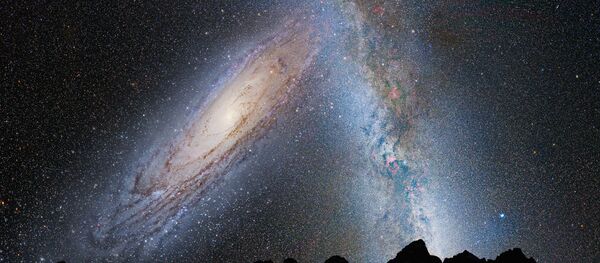NASA announced the discovery on Thursday, saying that the binary star, LMC P3, was identified using the Fermi Gamma-ray Space Telescope, as well as other facilities.
"Fermi has detected only five of these systems in our own galaxy, so finding one so luminous and distant is quite exciting," reads a statement from the space agency.
"Gamma-ray binaries are prized because the gamma-ray output changes significantly during each orbit and sometimes over longer time scales. This variation lets us study many of the emission processes common to other gamma-ray sources in unique detail."
The binary system rests in a region of space known as the Large Magellanic Cloud.
The system was first spotted in 2012, but LMC P3 was misidentified as a high-mass X-ray binary.
"The [normal] star is between 25 and 40 times the sun’s mass, and if we’re viewing the system at an angle midway between face-on and edge-on, which seems most likely, its companion is a neutron star about twice the sun’s mass," said Jay Strader, a member of the research, according to Raw Story.
Gamma-ray bursts have also been useful for NASA’s Swift observatory to investigate a number of unidentified radio sources detected in outer space.
"We have investigated a group of unassociated radio sources included in the 3CR catalog to increase the multi-frequency information on them and possibly obtain an identification," reads the paper published in arXiv.org earlier this month.
Researchers spent four months observing gamma-ray sources, determining that nine sources feature a substantial emission in the soft X-ray band.
“"After conducting Swift observations of 21 bright NVSS [NRAO VLA Sky Survey] sources corresponding to 3CR sources classified as unassociated in the third update of the 3CR catalogue, we have obtained new X-ray detections for nine of them," the paper states.
All in all, a good week for space exploration, and gamma rays in particular.






